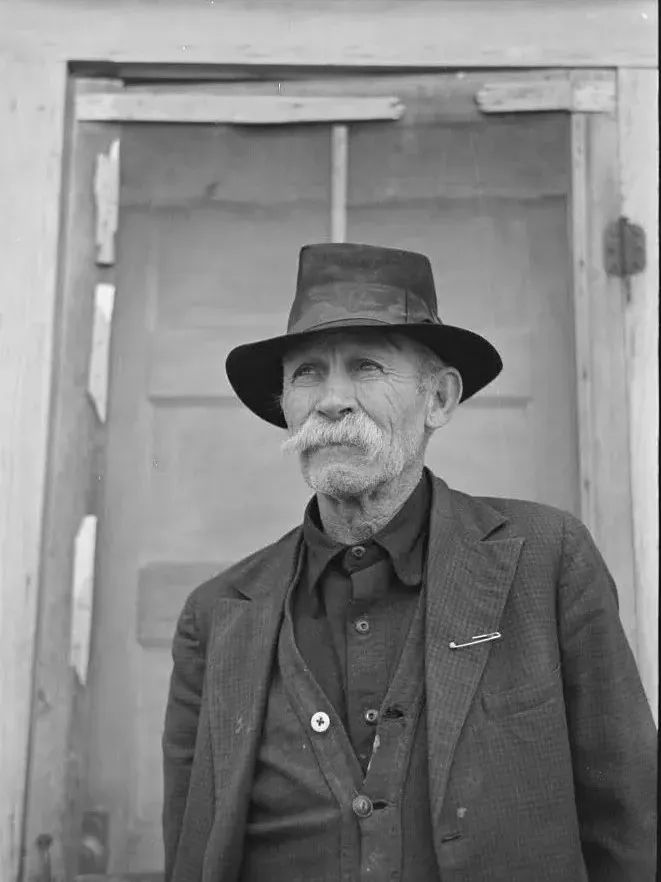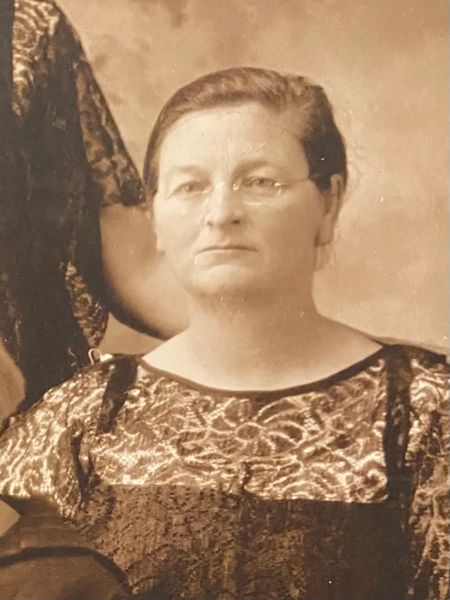
-'annie'-mccoy-family-courtesy-photo-a-2025.jpg?fit=outside&w=1600&h=2133)
MCHF Legacy Inductee
GEORGE W. “MAC” & ANNA (ATOR) “ANNIE” MCCOY
DISTRICT 1 - YEAR 2025
In 1898, recognizing ranching and grazing opportunities that would soon open up in northeastern Montana, George and Anna (Ator) McCoy made the decision to move their young family from the Stanford area of the Judith Basin in central Montana, to what would eventually become Sheridan County, Montana. By 1899, George, nicknamed “Mac” and Anna, known as “Annie,” were among the first white settlers to put down roots in the area north of present-day Plentywood, Montana, and thus began a four-generation family legacy of Montana farming and ranching.
Mac was born in 1869, near Brighton, Iowa to James and Laura (Nelson) McCoy. When he was four years old, his father died of complications from wounds suffered during the Civil War. At the age of 13, having been orphaned by the death of his mother, Mac went west to the Judith Basin with his older cousin, George Bain. Several of Mac’s Bain relatives had established ranches in the Judith Basin and it was from them that he learned the know-how needed to cowboy and ranch in the West. By fifteen, Mac was working the Judith Basin cattle roundups and is seen seated with Charles M. Russell and other cowboys in an 1884 photo taken at Utica, Montana.
A native of Cedar County, Missouri, Annie Ator was born in 1877, to George Newton and Virginia Alice (McMillan) Ator. At a young age, Annie and her family left Missouri and migrated to Montana by overland wagon. The Ator family settled in Great Falls, Montana then later moved to Stanford. It was while Annie was working as a cook and housekeeper on the ranch of Mac’s cousin, George Bain, that she and Mac met and later married in December of 1896. Their oldest child, Clem, was born in Stanford in 1897.
Mac first saw the plains of northeastern Montana in 1892, while trailing sheep from the Judith Basin to a railhead in western North Dakota. He was impressed with the vast areas of rolling hills covered with rich grasses, natural windbreaks, streams, and free flowing springs. When it became apparent that the area he had been so “taken by” in his youth would soon become available for homesteading, Mac and two of his brothers-in-law, left Stanford and headed east to stake out their ranch sites. Upon Mac’s return to Stanford, he, Annie, and her family, began planning for the move. The McCoys and Ators spent the winter of 1898-99 at Fort Benton, Montana, waiting for the arrival of steam ships bringing in the supplies that would be needed for the trip east, and the building of their new homes.
With the coming of spring, the two families headed east by wagon. The Ators settled south of Plentywood, along what became known as Ator Creek and the McCoys to the north. A few months after arriving, Annie gave birth to the McCoy’s second child, Martha. The small family began the hard work of making a home on the banks of what is now called McCoy Creek. The only tree standing within sight, they aptly dubbed, “The Lone Tree” and it became the family’s generational marker as the place where the McCoy Ranch began.
Living in a small log cabin, Mac, Annie, Clem and Martha had miles of wide open and unfenced country to themselves. Mac saw the land as a place ready-made for raising sheep, and within four years the McCoy’s were grazing over 2,500 head.
As the community began to expand with the coming of more settlers, so did the entrepreneurial and community-minded spirit of the McCoy’s. Annie was often sought out by neighbors for medical care. She attended the births of many of the children born in the early days of settlement. Her obituary noted, “There was hardly a pioneer in the entire section to whose family she had not ministered”. By 1905, Annie’s work included general ranch chores, cooking for the many ranch hands who were employed throughout the year, and tending to a growing family that now included Clarence, Maggie and Jimmy.
Annie’s interest in civic responsibility led her to take advantage of Montana’s early recognition of a woman’s right to vote, as her name can be found on the 1916 Sheridan County list of registered voters.
Mac and Annie faced not only the hardships that naturally came with the building of a successful ranch in an isolated area but in 1903, they endured a devastating prairie fire that destroyed their grazing land, sheep sheds and stock of winter hay. The most tragic event that struck the young family was the 1907 drowning of their two-year old son, Jimmy, in the creek that ran past their house. Unable to continue living so near to the place of Jimmy’s death, Annie filed on a Desert Land claim two miles north. The house and other buildings were then moved to the new location. It was there that two more children, Abby and Bill, were born.
Mac looked to the future with a keen understanding of the changes that were happening all around the once isolated ranch. Committed to raising sheep and cattle, he seized opportunities to diversify his operation, thus allowing him to continue ranching. Seeing more and more land being broken up for farming and knowing there would be a steady need for horses that were still being used for farm work, he began importing stallions to sell and use for breeding purposes. In 1906, he and a partner traveled to Culberson, bought the area’s first horse-powered threshing machine, then began a profitable trip home by custom threshing fields from Culbertson to the Canadian border. Realizing that horsepower would eventually give way to machinery, they soon sold the thresher and bought a steam engine and Case grain separator. They again hired out, plowing land for area farmers. Mac’s resilient spirit led him to develop a variety of ways to keep his ranching operation profitable. He used the water of McCoy Creek to irrigate a large truck garden, raising a selection of vegetables including several thousand heads of cabbage. In 1936, the operation was promoted by a Sheridan County agent as an example of how area farmers could use handmade pumps to irrigate small truck gardens, raise produce for family use, then sell the excess at a considerable profit. Mac also made use of McCoy Creek during the winter by selling the ice that formed in it during the cold months. His ingenuity served him well, again, when during the dry years of the 1930s, he shipped stock to the Turtle Mountains of North Dakota for summer grazing in areas less affected by the drought.
The deaths of Annie in 1933, and George in 1940, did not bring an end to their ranching legacy that was honored as a Montana Centennial Farm and Ranch in 2020. Today, a grandson and great grandsons continue to operate McCoy Farms, Inc. on the same land that brought Mac and Annie to northeastern Montana over a century ago.
Sources:
Family stories: Ardelle Hart and Dale McCoy
Sheridan’s Daybreak compiled by Magnus Aasheim copyright 1970 by the Sheridan County Historical Association
Library of Congress: Chronicling America, Historic American Newspapers
“The Producers News” (Plentywood, MT
“The Searchlight” (Culbertson, MT)
“Plentywood Herald”
Library of Congress: Prints and Photos Division: George McCoy 1937
Montana Historical Society Research Center
Montana’s Centennial Farms and Ranches, Christine Brown, Montana Historical Society
Hart Family Research: 2020

